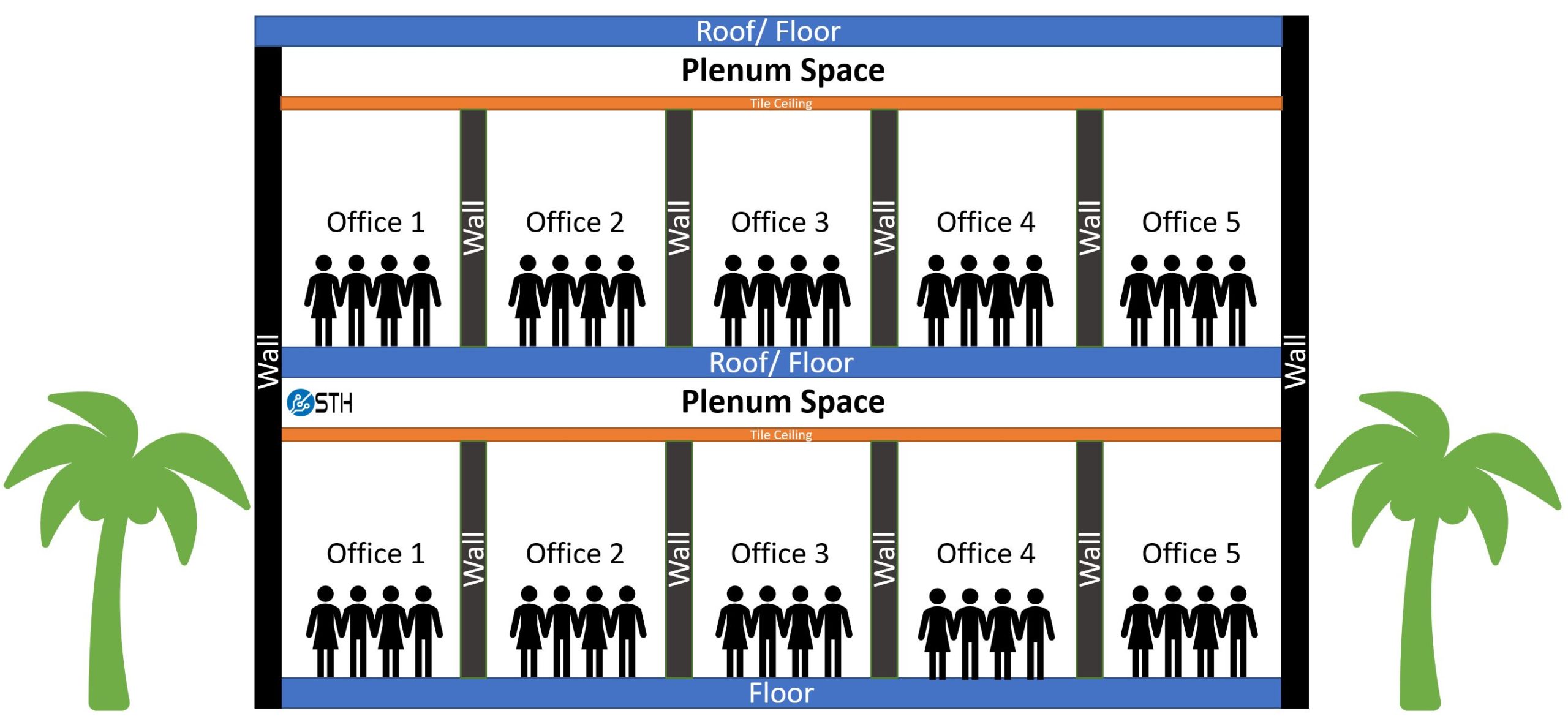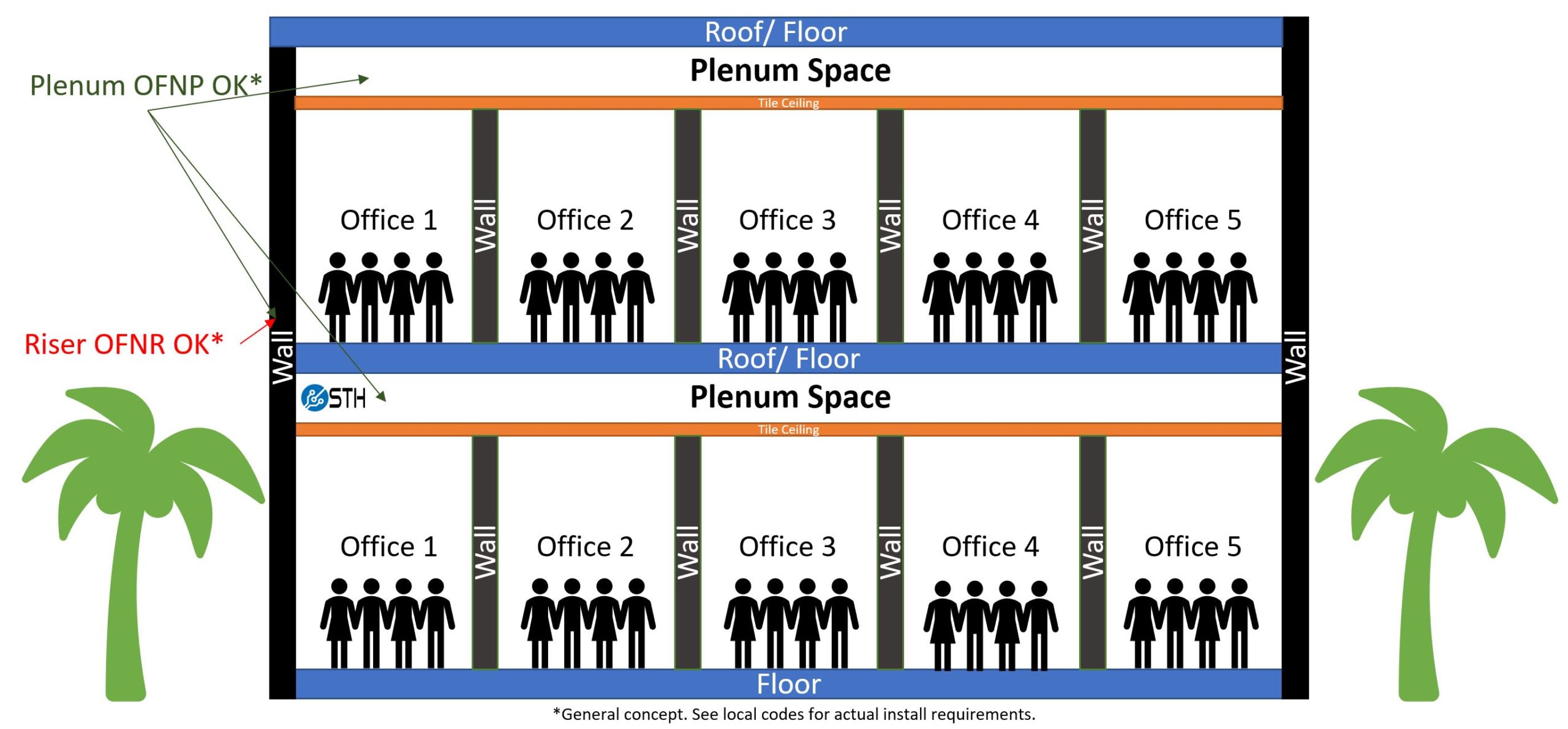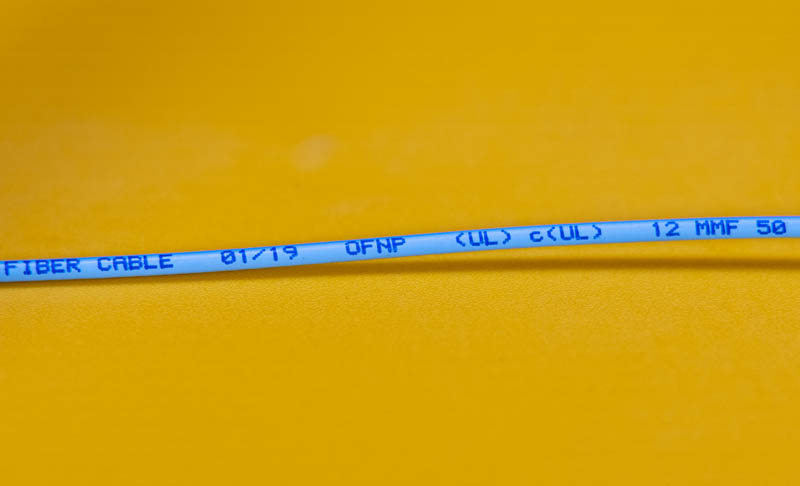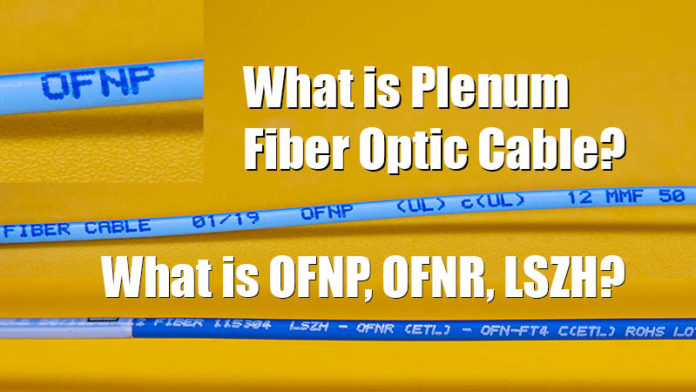We are starting a new series on STH as a guide to fiber optic networking. The reason for this series is that fiber is going to be required for many long runs in the future, especially if one wants to get solid speeds. While Cat8 Ethernet cable is rated for up to 40Gbps, that ecosystem is still in its infancy as fiber is already pushing to 10x that speed and beyond (see Inside a Marvell-Innovium Teralynx 7-based 32x 400GbE Switch.) The key challenge with fiber optic networking is that it is an absolute pain for a beginner to get into. So we are starting our series with “What is Plenum Fiber Optic Cable.”
Since “plenum” is a word in this context that many readers will not be familiar with, especially for those whose English is a second language, perhaps because they learned Hindi or something else as their first. For those folks and in the context we care about, a “plenum” is an air-filled space in a structure that often receives air for distribution.
What is Plenum Fiber Optic Cable
To understand what “plenum” fiber optic cable is compared to other types, the important aspect is that plenum is not really focused on the optical performance characteristics of the cable itself. Since in-rack we often see DACs (direct attach copper) used, many starting from smaller installations do not deal with this. Fiber is often used to span multiple racks, or multiple rooms. For example, if you have an apartment building, condominium complex, or a co-working space, and you need to wire the building often cabling goes in walls or in the air space above the tile ceilings. Given that it is installed in buildings, one needs to think about the fire, smoke, and shielding of cables. For fiber optic cables, the majority of the cable diameter is not the actual fiber strands, but it is all of the sleeving/shieldings that go around the glass strands.
According to the US National Electric Code (NEC), a widely used guideline for many jurisdictions, a plenum is a:
“Compartment or chamber to which one or more air ducts are connected and forms part of the air distribution system.”
Drawing a diagram here is a common example looking at an office space:

The concern is that in the event of a fire, the space above the ceiling tile connects the different rooms and is an oxygen-rich environment. We know there are those who run fiber through air ducts, and we are not going to cover that here, but one can imagine the impact of a fire there as well. The NEC restricts the types of materials that can go into these plenum airways to mitigate fire spread.
For new construction, often cable conduits will be installed. This helps protect the cable and can help allow for future expansion. Still, many existing buildings do not have conduits or conduit space to run fiber or other cables. The NEC states that all cabling not in conduit, installed in plenum spaces, shall be listed as having adequate fire-resistant and low smoke-producing characteristics.
As a result, if one runs cable through air-filled spaces (like air ducts, or areas above ceiling tiles that are part of the air distribution system), not through conduit, “plenum” cabling must be used. Plenum cables utilize plastics around the fiber optic strands that utilize flame-retardant, low smoke materials. These coatings offer both resistance to fire and low smoke if they do burn. Plenum plastics also will not emit large quantities of harmful fumes.

Another common standard if a fiber cable is not plenum rated is that it can be riser rated. Riser rated is designed to connect one floor to another floor in a vertical shaft.

Typically plenum cable is going to be more expensive, and it is going to be less flexible than riser cable. Still, the advantage is that one can generally run plenum cable in areas where a riser cable can be used.
How do I know if I have a Riser or Plenum Fiber Optic Cable?
Typically, one will see OFxR on the riser cable (you can remember R for “riser”) or OFxP (remember P for “plenum”.) Typically the ‘x’ will be a N for fiber optic cable you purchase which means that we have:
- OFNR – Optical Fiber Non-conductive Riser

OFNR LSZH Cable - OFNP – Optical Fiber Non-conductive Plenum

Plenum Fiber Optic Cable Close
One other common marking you may want to look for is LSZH that you can find in conjunction with OFNR and OFNP fiber cables. LSZH stands for “low-smoke zero-halogen.” LSZH cable jacket material is non-halogenated and flame retardant. Typically these are found in riser and plenum fiber cables because LSZH is low smoke, low toxicity, and has low corrosion characteristics. LSZH fiber optic cables are free of halogenated materials that can be toxic in smoke like Astatine (At), Bromine (Br), Chlorine (Cl), Fluorine (F), and Iodine (I). That is all stuff that you do not want to breathe a lot of during a building fire.
We are not going to cover it here, but the cable installed where people will occupy is called general purpose cable.
Final Words
As always, consult your local codes on what cable should be used where and when. For our readers, hopefully, this helped explain what a fiber optic plenum cable is. If you see things like OFNP LSZH or OFNR LSZH in a cable (or no LSZH!) you should now know what that means.

Again, this is going to be a part of a series at STH where we are going to help demystify some of these common markings. If you have suggestions for edits feel free to leave them below. This is a huge area to try to cover.
Update: After this went live, we have a video to go along with it:
As a quick update, we now have a Fiber Optic Networking Guide SC or LC Connector online.





National Fire Protection Association (NFPA) “NFPA 70®: National Electrical Code®” is not the only NFPA standard addressing this issue let alone the only organization promulgating applicable standards. [Who knew the NEC was written by the NFPA. Some think it was written by UL or some government agency.] Professionally I have to deal with “NFPA 99: Health Care Facilities”, and equivalent ICC standards, which expands the NEC requirements for medical facilities. The code In our area reference the the International Codes Council (https://www.iccsafe.org) standards.So a more appropriate statement might be “applicable building and or fire protection codes and standards”.
Helpful !
Very cool!
Hope your series will get into MPO and MPO polarity, as that was quite a challenge to understand. Even gnarlier would be MPO-24 to MPO-8 break outs for getting the most out of 100GBASE-SR4 interconnections, given the amount of attention STH gives to 100+ Gbps networking.
Yea polarity is a pain on all of this. The somewhat nice thing is that the install is going to be greenfield. On the MPO-24 to 8, running single and multi mode MTP-12 bundles not 24 since they were (way) cheaper.
If you had astatine compounds in your cable jackets I think you’d have a much bigger problem that what decomposition products are made in a fire. How you would manage that is beyond me because it has a half life of 10 hours or less.
” ‘plenum’ is a word in this context that many readers will not be familiar with, especially for those whose English is a second language
I doubt you could find many US high school graduates who would be able to define plenum.
OTOH you will find a plenty of people from exSoviet bloc that are still remembering what the plenum was :-D
Astatine in your plastic insulation? I would like to see that.
From a considerable distance…behind radiation shielding.
Related: in buildings outside cities it can be a requirement to run all cabling thru metal conduits. There are animals, rodents especially, that get into the building. Some of them have a taste for cable. A ski hill I know, if they run cable without protection, it will not last a year before rodents chew it up.